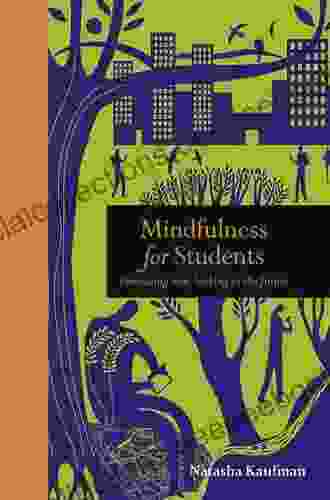Breaking The Exclusion Cycle: Empowering Individuals With Disabilities Through Inclusive Education

Inclusive education is a fundamental human right that allows individuals with disabilities to fully participate in education alongside their peers without discrimination or barriers. It is a powerful tool to break the cycle of exclusion and marginalization that people with disabilities have often faced in traditional education systems. This article delves into the importance of inclusive education, examines the barriers to its implementation, and explores effective strategies to overcome these challenges.
4.3 out of 5
| Language | : | English |
| File size | : | 4697 KB |
| Text-to-Speech | : | Enabled |
| Screen Reader | : | Supported |
| Enhanced typesetting | : | Enabled |
| Print length | : | 288 pages |
| Lending | : | Enabled |
Benefits of Inclusive Education
Inclusive education offers numerous benefits for individuals with disabilities, including:
- Enhanced Academic Outcomes: Studies have consistently shown that students with disabilities who participate in inclusive settings exhibit improved academic performance compared to those in segregated environments.
- Increased Socialization and Communication Skills: Inclusive classrooms provide opportunities for students with disabilities to interact with their peers, develop social skills, and improve their communication abilities.
- Positive Self-Esteem and Confidence: Being part of an inclusive environment fosters a sense of belonging and self-worth in students with disabilities, contributing to their overall well-being.
- Improved Employment Prospects: Inclusive education prepares students with disabilities for the workforce by developing their skills, knowledge, and confidence in interacting with diverse individuals.
- Reduced Stigma and Discrimination: Inclusive education challenges societal stereotypes and promotes the acceptance of individuals with disabilities, reducing stigma and discrimination.
Barriers to Inclusive Education
Despite its benefits, inclusive education faces several barriers, including:
- Lack of Teacher Training and Support: Many teachers lack the necessary training and support to effectively accommodate students with disabilities in their classrooms.
- Physical and Architectural Accessibility: Schools and classrooms may not be fully accessible, making it difficult for students with physical or sensory disabilities to participate.
- Attitudinal Barriers: Negative attitudes and misconceptions about the abilities of individuals with disabilities can hinder their inclusion.
- Lack of Assistive Technology: Schools may lack the necessary assistive technology devices and resources to support students with disabilities.
- Inadequate Funding: Funding shortages can limit schools' ability to provide the necessary resources and support for inclusive education.
Strategies to Overcome Barriers
Overcoming the barriers to inclusive education requires a multi-faceted approach that involves collaboration and commitment from various stakeholders, including educators, parents, policymakers, and society as a whole:
- Comprehensive Teacher Training: Teachers should receive ongoing training on inclusive practices, special education, and the use of assistive technology.
- School Accessibility Audits: Schools should conduct regular accessibility audits to identify and address any physical or architectural barriers.
- Attitude Change Initiatives: Educational campaigns and workshops should be conducted to challenge negative attitudes and promote the acceptance of individuals with disabilities.
- Investment in Assistive Technology: Schools and governments should allocate adequate funding for assistive technology devices to support students with disabilities.
- Increased Funding and Resources: Governments and school districts must provide sufficient funding to ensure that schools have the resources necessary to implement inclusive practices.
Inclusive Education in Practice
Several successful examples of inclusive education demonstrate its transformative power:
- The Inclusive Education Network (IEN): IEN, a global network of organizations and individuals, advocates for inclusive education and provides resources to support its implementation.
- The Salamanca Statement: In 1994, the United Nations Educational, Scientific and Cultural Organization (UNESCO) adopted the Salamanca Statement on Inclusive Education, which calls for the development of inclusive education systems worldwide.
- Universal Design for Learning (UDL): UDL is a framework for designing learning environments and materials to be accessible to all students, regardless of their abilities or disabilities.
- Co-Teaching: Co-teaching involves two or more teachers working together to provide instruction in an inclusive classroom.
- Peer Support Programs: Peer support programs can provide additional support and mentorship for students with disabilities.
Breaking the cycle of exclusion is essential for creating a truly inclusive and equitable society. Inclusive education is a powerful tool to empower individuals with disabilities, enabling them to reach their full potential and contribute meaningfully to the world. By addressing the barriers to inclusion and implementing effective strategies, we can create learning environments where all students, regardless of their abilities, feel valued, respected, and supported. As we strive for a more inclusive and just world, let us embrace the principles of inclusive education and work together to make it a reality for all.
4.3 out of 5
| Language | : | English |
| File size | : | 4697 KB |
| Text-to-Speech | : | Enabled |
| Screen Reader | : | Supported |
| Enhanced typesetting | : | Enabled |
| Print length | : | 288 pages |
| Lending | : | Enabled |
Do you want to contribute by writing guest posts on this blog?
Please contact us and send us a resume of previous articles that you have written.
 Novel
Novel Page
Page Text
Text Library
Library Paperback
Paperback E-book
E-book Newspaper
Newspaper Bookmark
Bookmark Shelf
Shelf Foreword
Foreword Preface
Preface Synopsis
Synopsis Annotation
Annotation Manuscript
Manuscript Scroll
Scroll Codex
Codex Tome
Tome Narrative
Narrative Autobiography
Autobiography Memoir
Memoir Reference
Reference Resolution
Resolution Librarian
Librarian Card Catalog
Card Catalog Borrowing
Borrowing Stacks
Stacks Archives
Archives Research
Research Academic
Academic Journals
Journals Reading Room
Reading Room Interlibrary
Interlibrary Literacy
Literacy Study Group
Study Group Thesis
Thesis Dissertation
Dissertation Storytelling
Storytelling Awards
Awards Book Club
Book Club Theory
Theory Joseph M Siracusa
Joseph M Siracusa Luis Portas
Luis Portas L T C Rolt
L T C Rolt Miller Puckette
Miller Puckette Alexandra West
Alexandra West Julie Klam
Julie Klam James Kirkpatrick
James Kirkpatrick Daniel Rachel
Daniel Rachel Sibylle Geier
Sibylle Geier David Weigel
David Weigel David Crosby
David Crosby Maureen Whitebrook
Maureen Whitebrook Jayden Burns
Jayden Burns Zachary Karabell
Zachary Karabell Aaron Freeman
Aaron Freeman Karen Ranney
Karen Ranney Benjamin Hulme Cross
Benjamin Hulme Cross Hal Brunson
Hal Brunson Todd Kettler
Todd Kettler Megan Dougherty
Megan Dougherty
Light bulbAdvertise smarter! Our strategic ad space ensures maximum exposure. Reserve your spot today!
 Nathan ReedFollow ·3.2k
Nathan ReedFollow ·3.2k Vladimir NabokovFollow ·18.8k
Vladimir NabokovFollow ·18.8k Chris ColemanFollow ·13.1k
Chris ColemanFollow ·13.1k Jaylen MitchellFollow ·2.3k
Jaylen MitchellFollow ·2.3k James HayesFollow ·15k
James HayesFollow ·15k Kyle PowellFollow ·4k
Kyle PowellFollow ·4k Cormac McCarthyFollow ·16.2k
Cormac McCarthyFollow ·16.2k Heath PowellFollow ·16.1k
Heath PowellFollow ·16.1k

 Andy Hayes
Andy HayesEmbracing Now: Embark on a Mindfulness Journey for a...
In a world...

 Heath Powell
Heath Powell100 Hymns for Violin and Guitar: A Comprehensive Guide to...
The violin and...

 Floyd Richardson
Floyd RichardsonBark In The Park: Poems For Dog Lovers
Dogs are our best...

 Douglas Adams
Douglas AdamsThe Barter Crusade: A Journey into the Realm of Exchange...
In a world driven by monetary transactions,...

 Nathaniel Hawthorne
Nathaniel HawthorneInsight Guides Explore Nice & the French Riviera...
Prepare to embark on an unforgettable journey...

 Carlos Fuentes
Carlos FuentesThe Ultimate Practical Guide to Percussion: Exploring the...
Embark on a journey into the enchanting...
4.3 out of 5
| Language | : | English |
| File size | : | 4697 KB |
| Text-to-Speech | : | Enabled |
| Screen Reader | : | Supported |
| Enhanced typesetting | : | Enabled |
| Print length | : | 288 pages |
| Lending | : | Enabled |











